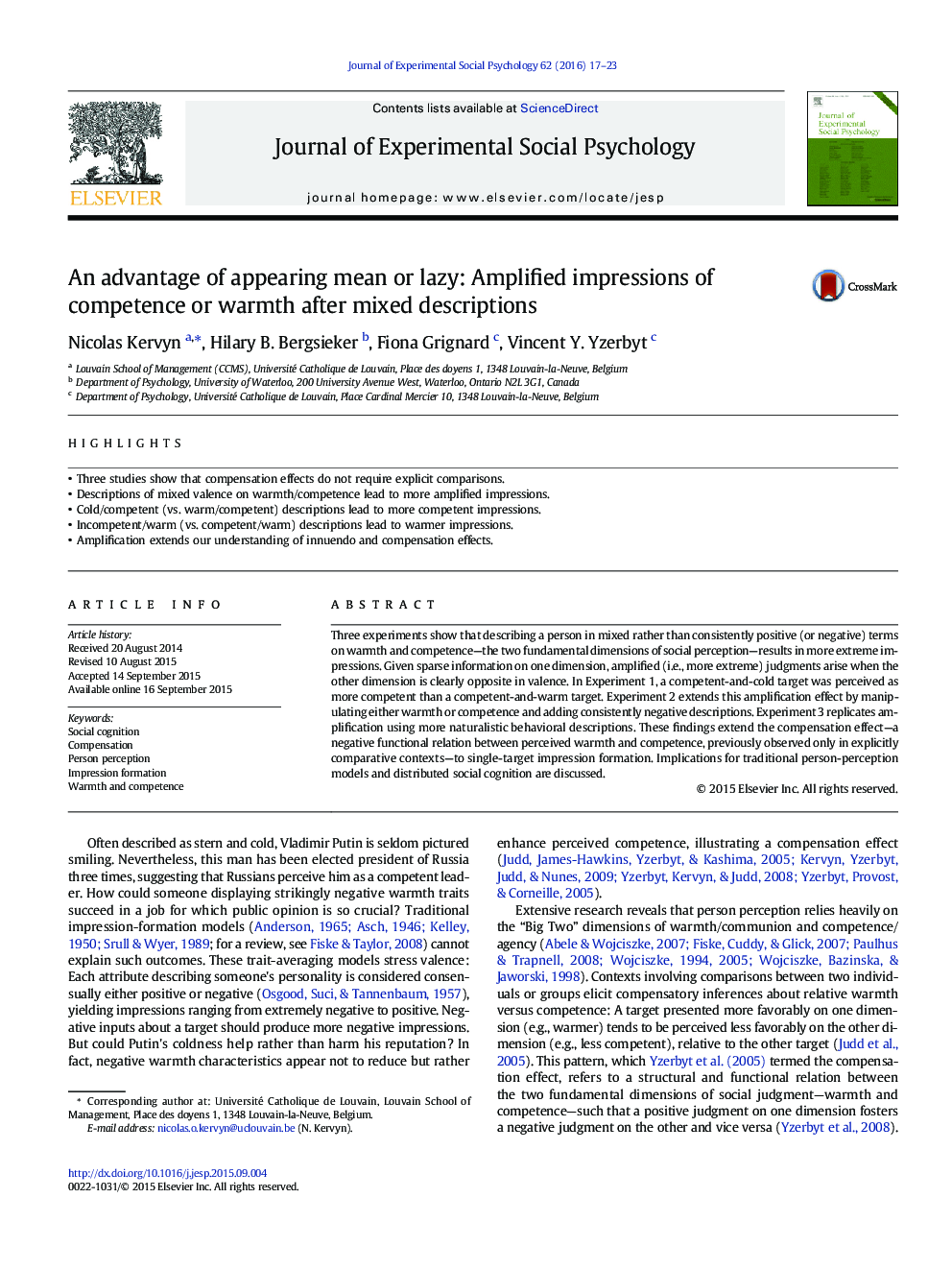| کد مقاله | کد نشریه | سال انتشار | مقاله انگلیسی | نسخه تمام متن |
|---|---|---|---|---|
| 947676 | 1475861 | 2016 | 7 صفحه PDF | دانلود رایگان |
• Three studies show that compensation effects do not require explicit comparisons.
• Descriptions of mixed valence on warmth/competence lead to more amplified impressions.
• Cold/competent (vs. warm/competent) descriptions lead to more competent impressions.
• Incompetent/warm (vs. competent/warm) descriptions lead to warmer impressions.
• Amplification extends our understanding of innuendo and compensation effects.
Three experiments show that describing a person in mixed rather than consistently positive (or negative) terms on warmth and competence—the two fundamental dimensions of social perception—results in more extreme impressions. Given sparse information on one dimension, amplified (i.e., more extreme) judgments arise when the other dimension is clearly opposite in valence. In Experiment 1, a competent-and-cold target was perceived as more competent than a competent-and-warm target. Experiment 2 extends this amplification effect by manipulating either warmth or competence and adding consistently negative descriptions. Experiment 3 replicates amplification using more naturalistic behavioral descriptions. These findings extend the compensation effect—a negative functional relation between perceived warmth and competence, previously observed only in explicitly comparative contexts—to single-target impression formation. Implications for traditional person-perception models and distributed social cognition are discussed.
Journal: Journal of Experimental Social Psychology - Volume 62, January 2016, Pages 17–23
